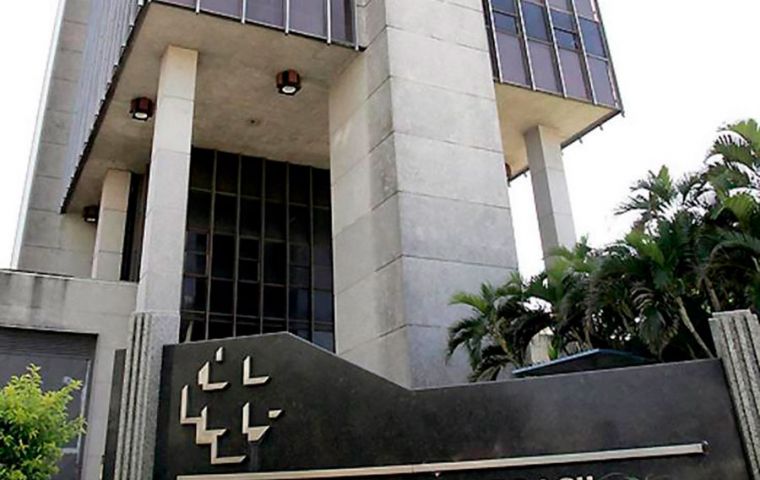MercoPress. South Atlantic News Agency
Inflation projections in Brazil fall yet again
 The 2022 projection is still above the inflation target set by the Central Bank's
The 2022 projection is still above the inflation target set by the Central Bank's Brazilian economic authorities have cut down projections regarding 2022's annual inflation from 5.71% to 5.62%, it was reported Monday. It was the 16th consecutive reduction of the National Wide Consumer Price Index (IPCA) estimate.
The new figures were published in Monday's issue of the weekly Focus Bulletin released by Brazil's Central Bank (BCB). For 2023, the inflation projection was 4.97%. For 2024 and 2025, the forecasts are for inflation of 3.43% and 3%, respectively.
The 2022 projection is still above the inflation target set by the Central Bank's National Monetary Council of 3.5%, plus/minus 1.5 percentage points.
September showed deflation of 0.29%, the third month in a row in which the index fell. With this result, the IPCA has accumulated a high of 4.09% for the year and 7.17% interannually, according to the Brazilian Institute of Geography and Statistics (IBGE).
To calculate the inflation target, the Central Bank uses the basic interest rate, the Selic, set at 13.75% per year by the Monetary Policy Committee (Copom), as its main instrument. The rate is at its highest level since January 2017.
For the financial market, the expectation is that the Selic will end the year at the same 13.75%. By the end of 2023, the estimate is that the basic rate will fall to 11.25% per year. For 2024 and 2025, the forecast is for a Selic of 8% a year and 7.75% a year, respectively.
When Copom increases the basic interest rate, the purpose is to contain heated demand, and this affects prices because higher interest rates make credit more expensive and stimulate savings. Thus, higher rates can also hinder the expansion of the economy.
Besides the Selic, banks consider other factors when it comes to defining the interest rates charged to consumers, such as default risk, profit, and administrative expenses.
When Copom lowers the Selic, the tendency is for credit to become cheaper, with an incentive to production and consumption, reducing control over inflation and stimulating economic activity.
For 2023, the Gross Domestic Product (GDP) - the sum of all goods and services produced in the country - is expected to grow a 0.59 %. For 2024 and 2025, the financial market projects a GDP expansion of 1.7% and 2%, respectively.
The dollar exchange rate is expected to remain at R$ 5.20 by the end of this year and stay at that level by the end of 2023.




Top Comments
Disclaimer & comment rulesCommenting for this story is now closed.
If you have a Facebook account, become a fan and comment on our Facebook Page!